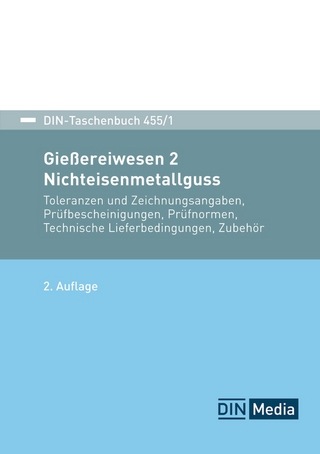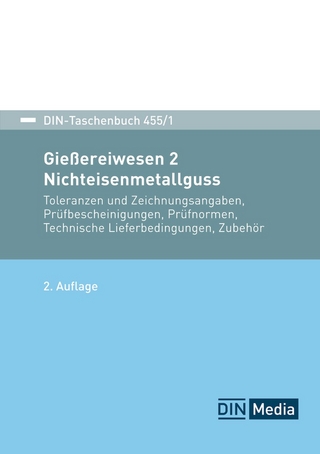
U.S. Coal
A Primer on the Major Issues
Seiten
2004
Nova Science Publishers Inc (Verlag)
978-1-59454-047-9 (ISBN)
Nova Science Publishers Inc (Verlag)
978-1-59454-047-9 (ISBN)
The US coal industry has gone through a number of gradual shifts. The industry has become more concentrated, and mine productivity has improved. More low-sulphur coal and less high sulphur coal is today being produced. Less coal is exported, in part because of a strong US dollar.
The US coal industry has gone through a number of gradual shifts in recent decades. The industry has become more concentrated, and mine productivity has improved. More low-sulphur coal and less high sulphur coal is today being produced. Less coal is exported, in part because of a strong US dollar. Improved production methods, such as greater utilisation of and improvements in longwall mining technology, have lowered the cost of underground mining, although surface mining continues to hold a substantial cost advantage. The United States is well endowed with coal. The total demonstrated resource base is estimated by the Energy Information Administration (EIA) at 508 billion short tons, of which about 274 billion short tons are classified as recoverable reserves. US recoverable reserves are estimated at 25% of total world reserves. Production of US coal reached an all-time high in 2001 at 1,121 million short tons. Coal supplies 22% of the nation's energy demand but 52% of its electricity needs. EIA forecasts coal to fall to 47% of the US electricity market by 2025 because of increased competition from natural gas. About 1,063 million short tons of coal were consumed in the United States in 2001, 90% of which was used in the electric power sector. Currently, railroads move about 65% of all coal, barges transport about 15%, and trucks about 11%. The outlook for US coal is mixed. While forecasts predict steady growth in coal supply and demand, the increased production is expected to come from fewer, larger mines and fewer producers. Continued competition from natural gas is likely to put pressure on coal prices for the foreseeable future.
The US coal industry has gone through a number of gradual shifts in recent decades. The industry has become more concentrated, and mine productivity has improved. More low-sulphur coal and less high sulphur coal is today being produced. Less coal is exported, in part because of a strong US dollar. Improved production methods, such as greater utilisation of and improvements in longwall mining technology, have lowered the cost of underground mining, although surface mining continues to hold a substantial cost advantage. The United States is well endowed with coal. The total demonstrated resource base is estimated by the Energy Information Administration (EIA) at 508 billion short tons, of which about 274 billion short tons are classified as recoverable reserves. US recoverable reserves are estimated at 25% of total world reserves. Production of US coal reached an all-time high in 2001 at 1,121 million short tons. Coal supplies 22% of the nation's energy demand but 52% of its electricity needs. EIA forecasts coal to fall to 47% of the US electricity market by 2025 because of increased competition from natural gas. About 1,063 million short tons of coal were consumed in the United States in 2001, 90% of which was used in the electric power sector. Currently, railroads move about 65% of all coal, barges transport about 15%, and trucks about 11%. The outlook for US coal is mixed. While forecasts predict steady growth in coal supply and demand, the increased production is expected to come from fewer, larger mines and fewer producers. Continued competition from natural gas is likely to put pressure on coal prices for the foreseeable future.
CONTENTS: Introduction; Coal Supply and Demand; Structure of the Coal Industry; Federal Agencies and Coal; Environment, Health and Safety; Coal Research and Development; Outlook and Recap; Index.
| Erscheint lt. Verlag | 1.10.2004 |
|---|---|
| Zusatzinfo | Illustrations |
| Verlagsort | New York |
| Sprache | englisch |
| Maße | 215 x 140 mm |
| Gewicht | 106 g |
| Themenwelt | Technik ► Bergbau |
| Technik ► Elektrotechnik / Energietechnik | |
| Wirtschaft ► Volkswirtschaftslehre | |
| ISBN-10 | 1-59454-047-0 / 1594540470 |
| ISBN-13 | 978-1-59454-047-9 / 9781594540479 |
| Zustand | Neuware |
| Informationen gemäß Produktsicherheitsverordnung (GPSR) | |
| Haben Sie eine Frage zum Produkt? |
Mehr entdecken
aus dem Bereich
aus dem Bereich
technische Grundlagen, Risikomanagement, Umweltauswirkungen
Buch | Hardcover (2023)
Hanser (Verlag)
CHF 139,95
Toleranzen und Zeichnungsangaben; Prüfbescheinigungen; Technische …
Buch | Softcover (2024)
DIN Media (Verlag)
CHF 269,95
Buch | Softcover (2024)
DIN Media (Verlag)
CHF 349,95


